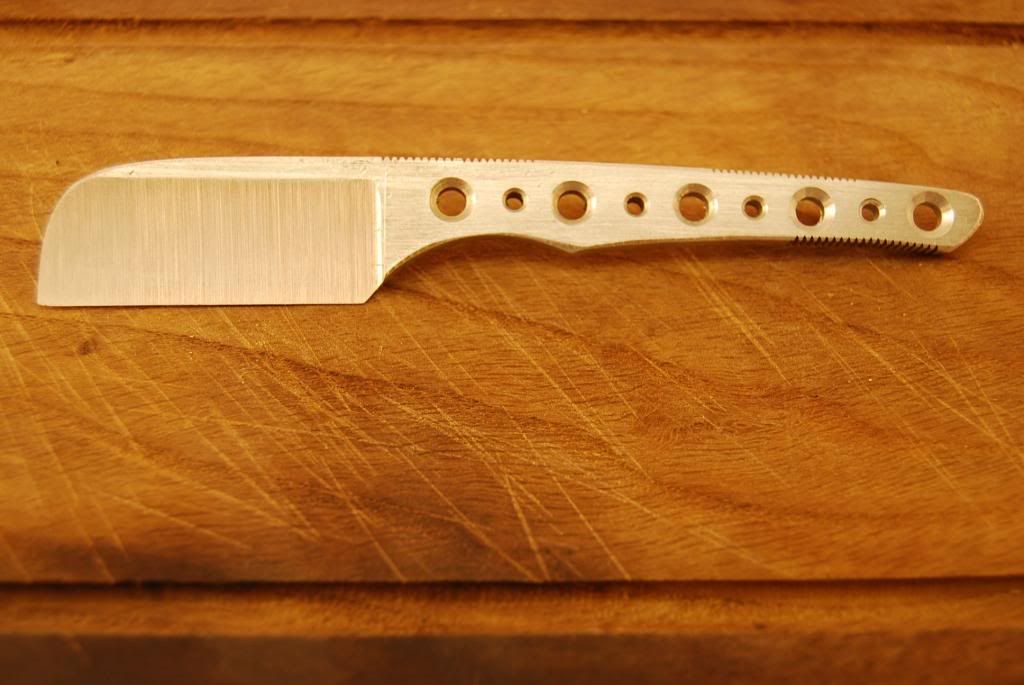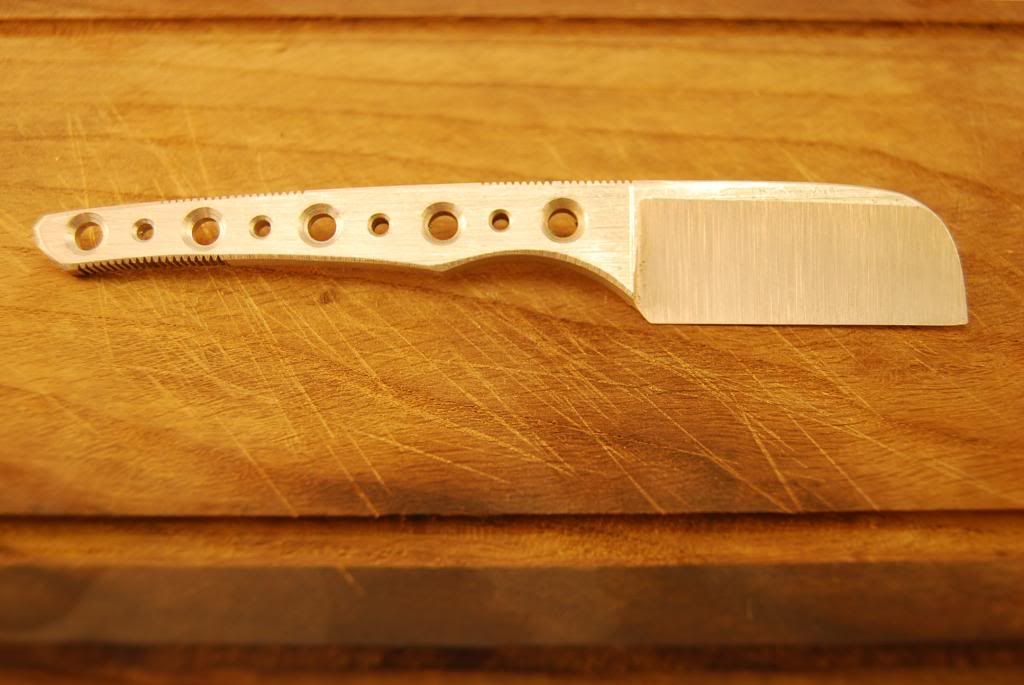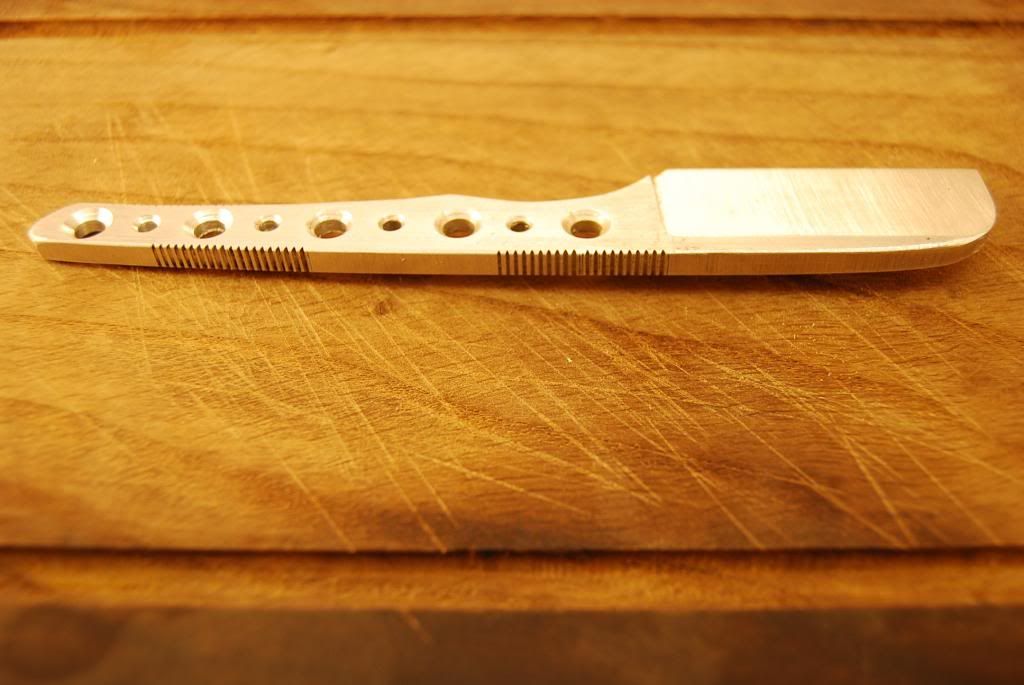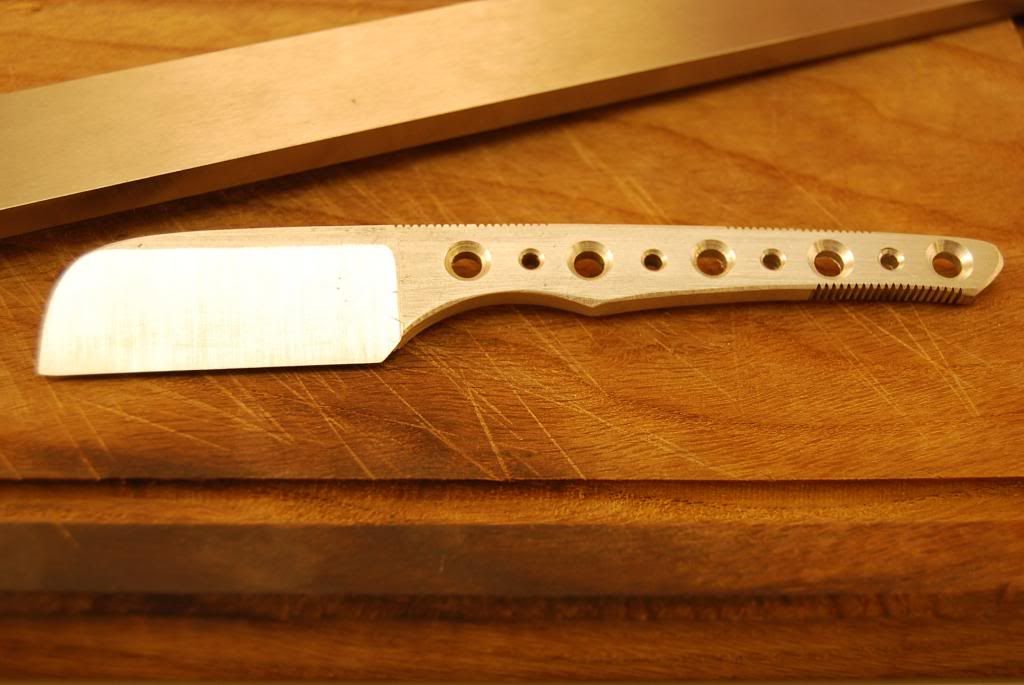Results 1 to 10 of 11
-
03-24-2014, 10:59 AM #1Junior Member

- Join Date
- Apr 2013
- Location
- Stockholm, Swedcen
- Posts
- 15
Thanked: 0 A few questions about making straight razors.
A few questions about making straight razors.
Hello,
I have been wanting to make straight razors for some time now, and I am in the process of designing a few models. However I have a few questions for those of you who have some experience, if you are willing to share.
I will be buying a 8" contact wheel to begin with and a 4" wheel later on, so I am planning on making 6/8, 7/8, 8/8 inch wide razors at first. I have been reading as much as possible about what goes into making a straight razor, and I have also watched videos on youtube.
I came across some information regarding the ratio between the width of a blade and the thickness of the spine, and it was 3,5:1 or 4:1 depending on the source. I'm thinking that such a ratio is not a fixed rule but more of a guideline since there can be variations in spine thickness between different models of straight razors with the same blade width, and hone wear will also have an impact over time.
I live in Sweden and the steel that I have easy access to, (that has the most varied stock thickness), is RWL-34.
So if I understand it correctly, in order to determine how thick my blade stock should be, I simply divide my intended blade width, 6/8" or 19.05 mm with 3,5 or 4, which should give me the optimum thickness... A 3,5:1 ratio gives me 5,44mm, (.214 inches) and a 4:1 ratio gives me 4,76mm, (.187 inches).
The stock thickness closest is 5,2 mm, (.204 inches) would this give me a correct edge angle?
Should I try to stick to one of these ratios when I am designing a razor, or could I just ignore it and go with whatever stock thickness I have access to, or might this compromise the razors ability to take a keen edge?
Thank you in advance for any help you can provide.
Kind regards
Max
-
03-24-2014, 12:04 PM #2

Max I do believe that the ratio of the spine thickness to the width of the blade is so that the sharpening/honing process can be done without compromising the blade itself. To thick and it will be difficult to set a cutting edge, too thin and it can compromise the structure of the blade. At the end of the day I think this is a loose guideline. Do let me know when you have some prototypes. I'd like to take a look at what you make.
-
The Following User Says Thank You to rpaduano For This Useful Post:
Sompla (03-24-2014)
-
03-24-2014, 12:37 PM #3

It is not a fixed rule, but stay above 1:4. Lower than that and you will have a razor that is too thin and you will have problems getting a good edge. Do not ignore those design guidelines because you will end up with something that looks like a razor, but will have a lot of problems.
Also, you should be able to get tool steel as well instead of RWL34. Sweden has plenty of good steel sources. Stainless is not necessarily the best steel to start with.Til shade is gone, til water is gone, Into the shadow with teeth bared, screaming defiance with the last breath.
To spit in Sightblinder’s eye on the Last Day
-
-
03-24-2014, 12:58 PM #4

The Coticule.be site has a calculator for determining the bevel angle dependent on spine width and distance from spine to edge - i.e. where the spine hits the hone. According to this site the ideal bevel angle is about 18 degrees which converts to about a 3.5:1 ratio.
The point here is that your stock may be nearer Bruno's recommended 1:4 but if you are working the spine or creating a domed spine then the measuring point for blade width becomes lower because that's where the spine rests on the hone.
-
The Following User Says Thank You to UKRob For This Useful Post:
Sompla (03-24-2014)
-
03-24-2014, 04:07 PM #5Senior Member

- Join Date
- Jul 2013
- Location
- Shreve, Ohio
- Posts
- 229
Thanked: 68
Personally for the wheel sizes I would go with a 4" first then maybe an 8" later. With an 8" you wont be able to do a hollow grind on anything smaller than an 8/8 blade really the diameter of the wheel just doesn't allow it. It definitely wouldn't work on a 4/8 or 5/8.
As far as ratio and bevel angle I like using this excel sheet that is discussed here- http://straightrazorpalace.com/advan...pers-tape.html
-
The Following User Says Thank You to wynndow For This Useful Post:
Sompla (03-24-2014)
-
03-24-2014, 05:28 PM #6Junior Member

- Join Date
- Apr 2013
- Location
- Stockholm, Swedcen
- Posts
- 15
Thanked: 0
Thank you all for your advice!
Still not 100% sure on which wheel to buy first, when I google it many seem to say that a 8" wheel is the wheel they use the most and then a 4" wheel.
I have access to some SS 2140 steel..which is similar to uddeholm's ARNE and apparently O1.
I am not sure if it would make a good razor though, any thoughts? And I can always buy steel from other sources outside Sweden, I have bought steel from NJ Steel Baron before.
I've seen alot of different high carbon and tool steels beeing used for razors, such as 1095, O1 and D2, do you guys have any recommendations? The heat treatment will be outsourced so I can work with almost any steel.
-
03-24-2014, 06:32 PM #7

O1 and similar tool steels are perfect for razors. O1 is DIN material number 1.2510. I use 1.2842 which is very good stuff as well. You should be able to buy it from German sources as well. It is a common misconception that special steels are better than plain steels. The reverse is true actually. Simple tool steels and high carbon steels (1080 and 1095) create the best edges.
Til shade is gone, til water is gone, Into the shadow with teeth bared, screaming defiance with the last breath.
To spit in Sightblinder’s eye on the Last Day
-
03-24-2014, 06:50 PM #8Junior Member

- Join Date
- Apr 2013
- Location
- Stockholm, Swedcen
- Posts
- 15
Thanked: 0
Alrighty then, that's what I'll be ordering for the first few razors, Stål 1.2842 (SS 2140). And eventually some stainless and perhapes some damasteel..I have a piece of mammoth that would be just lovley with a damasteel blade...after I get some practice...I'm really looking forward to getting started and spending more time on this forum!
Thank you
-
03-24-2014, 10:45 PM #9

1.2842 is the steel I use for all my razors. It's very nice stuff to work with. Very soft when annealed, and dead easy to heat treat. It's not stainless, but it is more stain resistant than O1 because of the Chromium.
Damasteel is very pretty. Usually, Damasteel is made from 2 different tool steels. In other words, while it looks fantastic, it is essentially just pretty tool steel This also means it is a very good idea to learn to use tool steel, because you'll need those same skills when working with damasteel.
Til shade is gone, til water is gone, Into the shadow with teeth bared, screaming defiance with the last breath.
This also means it is a very good idea to learn to use tool steel, because you'll need those same skills when working with damasteel.
Til shade is gone, til water is gone, Into the shadow with teeth bared, screaming defiance with the last breath.
To spit in Sightblinder’s eye on the Last Day
-
04-26-2014, 02:42 PM #10Junior Member

- Join Date
- Apr 2013
- Location
- Stockholm, Swedcen
- Posts
- 15
Thanked: 0
Right, I've been delayed since I just got a new job so I haven't had any time to work on the razors.
But today I did get some stuff done. I got my 8" and 4" contact wheel and I started working on a prototype, in aluminium.
I'm going to make 4 razors to begin with in precision ground, 6 mm thick ( 0.236 inches ) SS 2140 - DIN 1.2842 steel.
One of the four will be my interpretation of a kamisori, it will be modern looking and with a symetrical grind. The kamisori is a 7/8 blade, measuring from the edge to the top of the hollow, not including the spine. The blade lenght is 2".
Here's a few pics of it, keep in mind that the grind is straight of a 60 grit belt, and I have done no finishing work at all, and the plunges are uneven etc.. This was also the very first time I have ever done a hollow grind But it's a prototype.. of a prototype so I did not intend this to be all nice and fancy lookin'
But it's a prototype.. of a prototype so I did not intend this to be all nice and fancy lookin'
I will be setting my plunges further back on the real razor, I think having it this way looks odd somehow.




Last edited by Sompla; 04-26-2014 at 02:45 PM.


 5Likes
5Likes LinkBack URL
LinkBack URL About LinkBacks
About LinkBacks






 Reply With Quote
Reply With Quote

